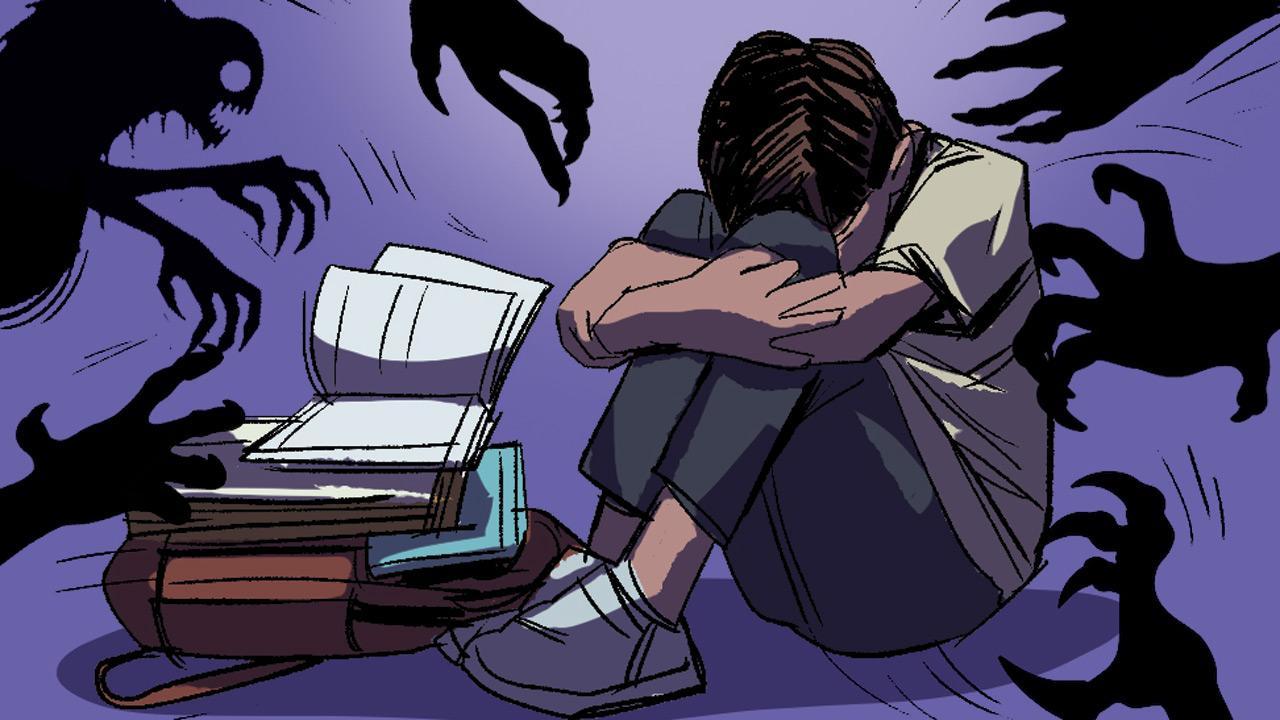The day before his suicide he had been made to lick the toilet seat and had his head flushed in the toilet.

Illustration/Uday Mohite
![]() On January 15t, 15-year old Mihir Ahammed, died by suicide in Ernakulam.
On January 15t, 15-year old Mihir Ahammed, died by suicide in Ernakulam.
ADVERTISEMENT
On January 30, his mother, Rajna PM shared a post on her Instagram account. It revealed a dystopic picture of violence, depression and a social structure devoid of empathy. A new student in Global Public School, Mihir had apparently been bullied by classmates about his skin colour. The day before his suicide he had been made to lick the toilet seat and had his head flushed in the toilet.
Soon after, Rajna PM shared a video meme that had circulated. A movie character jumping off a cliff captioned: Mihir on his way to jump off the 26th floor after getting called a poopyhead. Whats App screenshots shared on a page called Justice For Mihir displayed a similarly callous tone. Rajna claims this page was taken down under pressure from school authorities who also stonewalled the family’s enquiries saying the matter was now with the police. As media attention grew, the school circulated a statement implying that Mihir was a problem child, forced out of his earlier school, which that school then refuted.
This tragedy of a young person’s suffering and death is embedded inside the larger tragedy of the responses to it. Rather than collective grief, there is collective adversariality focused on protecting prestige. This idea of prestige is at the heart of power and profit, and the growing alienation of our world.
India has the highest suicide rate in the world. Adolescent suicides make up a third of Indian suicides, having grown by 300-400 per cent over the last 10 years. As experts say, youth itself is a risk factor for suicide, a time of struggles with self-esteem and the pressures of oncoming adulthood. The traumas of discrimination, evinced in sexual, physical and emotional bullying that isolates students, are an equally strong risk factor. This is why we see suicide concentrated in certain castes, genders and sexual orientations.
We see these suicides and reports of bullying in many so-called “elite” institutions, including IITs and medical schools. So, we have to ask questions about the culture that shapes the elite groups such institutions are built to produce; elites who will go on to lead various social institutions which will inscribe certain values into our social structures. And we have to question the way that educational policy itself is increasingly focused on producing elites and deepening social divides; not build to accommodate and bridge difference, but rather to cultivate indifference.
These are not isolated incidents. The WhatsApp chats around Mihir’s death are reminiscent of behaviours we saw during the now forgotten Bois Locker Room incident, where adolescent boys sexually demeaned their female classmates with morphed pictures. This defiant inhumanity is also reminiscent of the domineering tone of Twitter debates where deaths and misfortunes of certain castes and communities are mocked, even celebrated. They echo the selective commiseration of our political leaders.
Ours is not a world built to care for children. Competition—the race to beat each other and become elites— defines education. Success defines who and what we value, deeming other values worthless. This too is our climate change, the air we breathe, our emotional AQI. The miasma of pollution and alienation around us feed each other. Love and compassion must be cultivated on very hard ground, to build a political structure of empathy and care, for us to survive together.
Paromita Vohra is an award-winning Mumbai-based filmmaker, writer and curator working with fiction and non-fiction. Reach her at paromita.vohra@mid-day.com
 Subscribe today by clicking the link and stay updated with the latest news!" Click here!
Subscribe today by clicking the link and stay updated with the latest news!" Click here!







